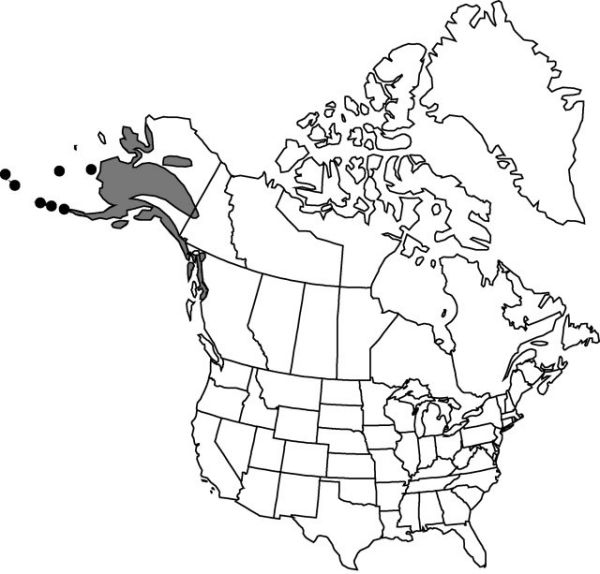Iris setosa
Jahrb. Gewächsk. 1(3): 71. 1820.
Rhizomes many-branched, producing dense clumps, 3–6 × 1.5–2 cm, covered with remnants of old leaves. Stems 1–2-branched, 1.5–9 dm, exceeding leaves; branches 1.25–1.5 dm proximal to terminal, but bearing flowers on nearly the same level. Leaves: basal with blade green with purple tinge basally, prominently ribbed, ensiform, 0.2–0.45 dm × 1–2 cm, ± glaucous distally; cauline subtending each lateral branch, blade reduced, 0.5–1.5 dm. Inflorescence units 2–3-flowered, lateral units usually 2-flowered; spathes green flushed with purple, foliaceous, ovate-lanceolate, 2.5–4.5 cm × 5–7 mm, unequal, inner longer than outer, sometimes scarious. Flowers: perianth dark blue-violet to red-purple with darker veins; floral tube ca. 0.7 cm; sepals 4–6 × 3–5 cm, glabrous, base abruptly attenuate to broad claw with undulate margins; petals much reduced, 1–2 × 0.3–0.4 cm, widest basally, mostly hidden by bases of outer sepals, apex acuminate, with 3–8 mm bristle; ovary conspicuously 3-angled, inflated at anthesis, 1.3 cm; style 2.5 cm, crests overlapping, subquadrate, 0.7 cm, margins incised; stigmas semicircular, margins entire; pedicel 2.5–4.5 cm, ± equaling spathes. Capsules roundly trigonal, 2.5 × 1.3–1.5 cm. Seeds in 2 rows per locule, light brown, with prominent raphe, D-shaped, 2–3 mm, very smooth. 2n = 34, 36, 38.
Phenology: Flowering Jul–Aug.
Habitat: Boggy meadows, shores, and dunes
Distribution

B.C., Yukon, Alaska, e coastal Asia to Japan.
Discussion
Iris setosa was originally described from Siberia; whether our populations are an extension from or were formerly continuous with the Asian ones is not known. Two varieties from Japan, var. hondoensis Honda and var. nasuensis Hara, with 2n = 54 may be triploids.
Selected References
None.